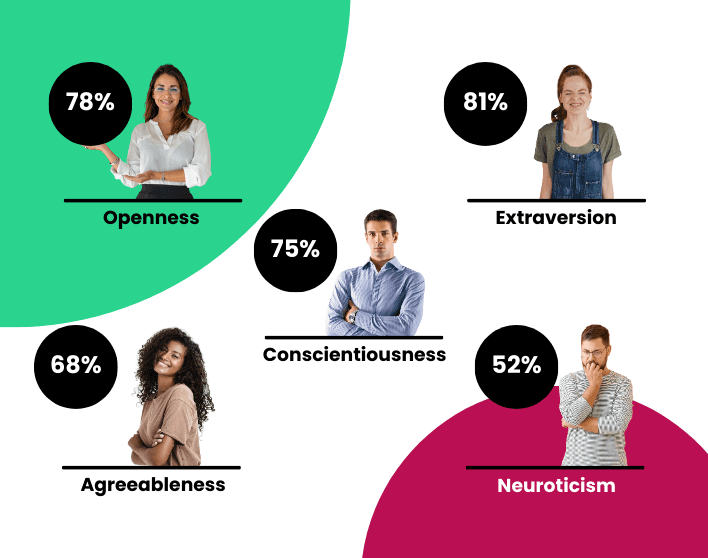Alexis Filippidis
Content Specialist
What is Talent Development?
Definition and Overview
Talent development is a strategic approach to enhancing employees' skills, competencies, and overall organizational performance. It encompasses a variety of initiatives designed to support continuous learning and career progression. Organizations can ensure their workforce is well-equipped to meet current and future challenges by focusing on talent development.
Talent development is not a one-size-fits-all process; it involves personalized learning and growth opportunities that cater to individual employee needs and aspirations. This approach helps cultivate a culture of continuous improvement and professional growth, benefiting both the employees and the organization.
Key Components of Talent Development:
Training and Education: Offering formal training programs, workshops, and courses to help employees acquire new skills and knowledge.
Career Development: Providing opportunities for career advancement through mentorship, coaching, and career path planning.
Performance Management: Implementing regular performance reviews and feedback mechanisms to track progress and identify areas for improvement.
Leadership Development: Fostering leadership skills in employees to prepare them for future leadership roles within the organization.
Succession Planning: Identifying and developing potential future leaders to ensure a smooth transition and continuity in key positions.
Employee Engagement: Encouraging active participation and engagement in development activities to enhance motivation and commitment.
Why Talent Development Matters
Increasing Productivity and Performance
Investing in talent development directly impacts productivity and performance. Employees who receive regular training and development are more competent and confident in their roles. This leads to higher efficiency, better quality of work, and overall improved performance. Continuous learning helps employees stay current with industry trends and best practices, making them more effective.
Ensuring Legal Compliance
In industries with stringent regulatory requirements, ongoing training is essential to ensure compliance with laws and regulations. Regular development programs inform employees about the latest legal standards and ethical practices, reducing non-compliance risk and associated penalties.
Enhancing Employee Engagement and Satisfaction
Employees who perceive that their organization is invested in their growth are likelier to be engaged and satisfied with their jobs. Talent development initiatives demonstrate a commitment to employee well-being and career progression, which can lead to higher levels of job satisfaction, loyalty, and retention.

Talent Management vs. Talent Development
Understanding Different Goals and Focus Areas
While talent management and talent development are interconnected, they serve different purposes. Talent management focuses on attracting, retaining, and managing the overall workforce. It includes processes like recruitment, performance management, and succession planning.
On the other hand, talent development specifically aims to enhance employees' skills and capabilities. It provides continuous learning opportunities, career advancement programs, and personalized development plans. Recognizing each organization's distinct goals helps it implement more effective strategies that address immediate and long-term talent needs.
Aligning Talent Development with Organizational Goals
Ensuring Your Program Supports Company Objectives
A successful talent development strategy must align with the organization's overarching goals. This alignment ensures that the skills being developed in employees contribute directly to the company's mission and objectives. Regularly reviewing and adjusting the talent development program to reflect changing business needs is crucial for maintaining relevance and effectiveness.
Reducing Skills Gaps and Future-Proofing the Organization
Talent development programs are critical in identifying and bridging organizational skills gaps. Companies can proactively address these gaps to prepare their workforce for future challenges and opportunities. This forward-thinking approach helps to future-proof the organization, ensuring it remains competitive and adaptable in a rapidly changing business environment.
Steps to Develop a Talent Development Program
Assessing Employee Skill Sets
The first step in developing a talent development program is assessing employees' skill sets. This can be done through skills assessments, performance reviews, and feedback from managers and peers. Understanding existing capabilities and identifying areas for improvement provides a solid foundation for creating targeted development plans.
Defining Your Company's Goals
Clearly defining the company’s short-term and long-term goals is essential for aligning talent development efforts. These goals should be communicated to employees so they understand how their personal development aligns with the organization’s objectives. This clarity fosters a sense of purpose and direction, motivating employees to engage in development activities.
Recognizing and Rewarding Growth and Achievement
Recognition and rewards are powerful motivators for employee development. Acknowledging employees who achieve their goals reinforces positive behavior and encourages others to participate in development initiatives. This can be done through formal recognition programs, promotions, and financial incentives.
Organizing Groups to Address Common Challenges and Objectives
Creating groups or teams to address common challenges and development objectives can foster collaboration and peer learning. These groups can serve as support networks where employees share insights, experiences, and best practices. This collaborative approach enhances the learning experience and helps to build a cohesive and supportive work environment.

Key Initiatives to Develop Talent and Empower Employees
Providing Diverse Learning Options and Methods
Offering a variety of learning options caters to different learning styles and preferences. This can include online courses, workshops, seminars, and on-the-job training. Providing multiple learning methods ensures all employees can access development opportunities that suit their needs.
Discovering Hidden Talents and Interests Through Interviews
Conducting regular interviews with employees to explore their interests and uncover hidden talents can provide valuable insights for talent development. These conversations help to identify untapped potential and align development opportunities with employees’ aspirations.
Training Managers to Support Employee Development
Managers play a crucial role in talent development. Training managers to recognize development needs, provide constructive feedback, and support their team’s growth is essential for creating a culture of continuous improvement. Effective management training ensures managers can guide and mentor their employees effectively.
Designing Individualized Training Programs
Tailoring training programs to the specific needs of each employee enhances the effectiveness of development initiatives. Individualized training plans should consider employees’ skill levels, career goals, and interests. This personalized approach helps to ensure that development efforts are relevant and impactful.
Securing Stakeholder Support for Development Initiatives
Gaining support from key stakeholders, including senior leadership, is critical for the success of talent development programs. Stakeholder support ensures that development initiatives receive the necessary resources and are integrated into the organization’s strategic priorities.
Promoting Performance Coaching
Performance coaching provides employees personalized guidance and support to achieve their development goals. Coaches can help employees identify strengths and weaknesses, set realistic goals, and develop actionable improvement plans. Regular coaching sessions create a structured framework for ongoing development.
Fostering a Culture of Continuous Learning
Creating and sustaining a culture of continuous learning is essential for long-term success. Encouraging employees to take ownership of their development and providing ongoing learning opportunities helps embed development into the organizational culture. This can be achieved through regular training programs, access to learning resources, and a supportive environment that values growth and improvement.
Best Practices for Effective Talent Development
Practical Tips and Proven Strategies for Success
Implementing best practices in talent development ensures that initiatives are effective and sustainable. These practices include setting clear development goals, providing regular feedback, using data to inform decisions, and fostering a supportive learning environment. Sharing success stories and best practices within the organization can inspire others to engage in development activities.
Evaluating the Impact of Talent Development
Key Metrics and Evaluation Methods
Measuring the impact of talent development programs is essential for understanding their effectiveness and making data-driven improvements. Key metrics can include employee performance, retention rates, and engagement levels. Regular evaluations using surveys, performance reviews, and feedback sessions provide valuable insights into the success of development initiatives.
Continuous Improvement Based on Feedback and Results
Using feedback and evaluation results to improve talent development programs continuously ensures they remain relevant and effective. This iterative approach allows organizations to adapt to changing needs and refine their strategies. Engaging employees in the feedback process also helps to create a sense of ownership and commitment to continuous improvement.
Conclusion
Talent development is essential for cultivating a high-performing and competitive organization. By enhancing employees' skills and competencies through personalized initiatives, companies can address current and future challenges effectively. This approach increases productivity, ensures compliance, and boosts employee engagement and satisfaction. Aligning talent development with organizational goals guarantees that development efforts contribute directly to the company’s mission, fostering a culture of continuous improvement and professional growth.
Implementing diverse learning options, discovering hidden talents, training managers, and designing individualized programs are key initiatives that empower employees and maximize their potential. Equally crucial are securing stakeholder support, promoting performance coaching, and fostering a culture of continuous learning. Organizations can ensure their talent development programs remain effective and sustainable by adhering to best practices and continuously improving based on feedback. Investing in talent development is a strategic move that prepares the workforce for future challenges, driving long-term organizational success.









